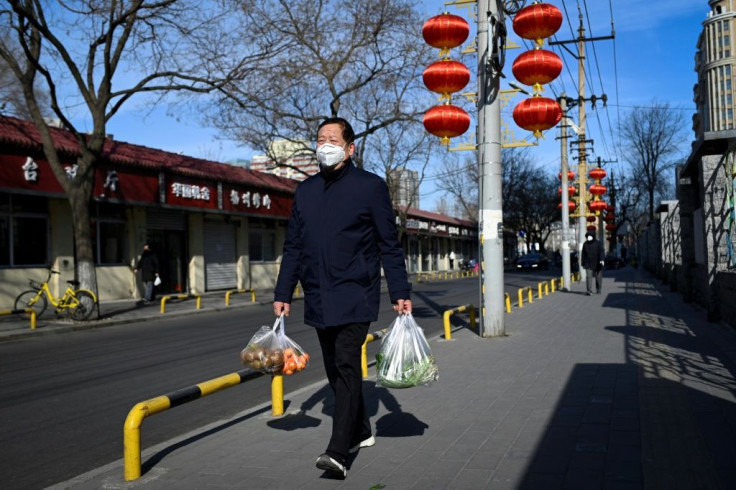Coronavirus Update: Virus May Have Already Infected 76,000 In Wuhan Alone

KEY POINTS
- The study estimates almost 76,000 people in Wuhan are already infected
- The size of the epidemic is doubling every 6.4 days
- By late April, 150,000 new cases may arise daily in China
The coronavirus crisis in China may be even worse than previously thought.
According to research published on Friday, nearly 76,000 people in the city of Wuhan – the epicenter of the disease – may already be infected. This figure is far greater than official estimates released by the Chinese government.
“We estimate that 75,815 individuals have been infected in Wuhan as of Jan. 25.,” stated a team of researchers led by Gabriel Leung, Dean of the Li Ka Shing Faculty of Medicine of the University of Hong Kong.
As of Friday, Chinese health officials confirmed that at least 257 people have been killed by the virus and almost 12,000 have been infected across the whole country. The government confirmed 6,000 cases in Hubei province, where Wuhan is the capital.
The virus – now called 2019-nCoV -- has now spread to at least 26 other countries.
“The apparent discrepancy between our modelled estimates of 2019-nCoV infections and the actual number of confirmed cases in Wuhan could be due to several factors,” Leung said in a statement.
He suggested, among other things, delays in stricken persons receiving medical treatment, and the time required to officially confirm cases with medical tests.
The Leung study also revealed that each person in Wuhan infected with the virus may have infected two to three other people on average, and that the epidemic has doubled in size every 6.4 days.
“If the transmissibility of 2019-nCoV were similar everywhere domestically and over time, we inferred that epidemics are already growing exponentially in multiple major cities of China with a lag time behind the Wuhan outbreak of about 1–2 weeks,” the report stated.
The study also noted that: “during the urgent demands of a rapidly expanding epidemic of a completely new virus, especially when system capacity is getting overwhelmed, some of those infected may be undercounted in the official register.”
If the Leung study is accurate, it might mean that the number of infections worldwide are on the order of at least hundreds of thousands.
The study estimated the infection has likely already spread from Wuhan to major cities like Guangzhou, Beijing, Shanghai and Shenzhen.
Even more worrying, the research pointed out these aforementioned cities account for more than one-half of all outbound international air travelers from China,
Study co-author Joseph Wu, a professor at the University of Hong Kong, further warned: “large cities overseas with close transport links to China could potentially also become outbreak epicenters because of substantial spread of pre-symptomatic cases unless substantial public health interventions at both the population and personal levels are implemented immediately.”
The Hong Kong University model projects that the number of infections of coronavirus could amount to 150,000 new cases daily in China between late April and early May.
As a result of their findings, the study authors urge governments to close down schools and allow company employees to work from home, among other measures.
Dr. Kathy Leung from the University of Hong Kong, said: “Strategies to drastically reduce within-population contact by cancelling mass gatherings, school closures, and introducing work-from-home arrangements could contain the spread of infection so that the first imported cases, or even early local transmission, does not result in large epidemics outside Wuhan.
She added: “It might be possible to reduce local transmissibility and contain local epidemics if substantial, even draconian, measures that limit population mobility in all affected areas are immediately considered. “
Professor Gabriel Leung added: “Based on our estimates, we would strongly urge authorities worldwide that preparedness plans and mitigation interventions should be readied for quick deployment, including securing supplies of test reagents, drugs, personal protective equipment, hospital supplies, and above all human resources, especially in cities with close ties with Wuhan and other major Chinese cities.”
© Copyright IBTimes 2024. All rights reserved.




















